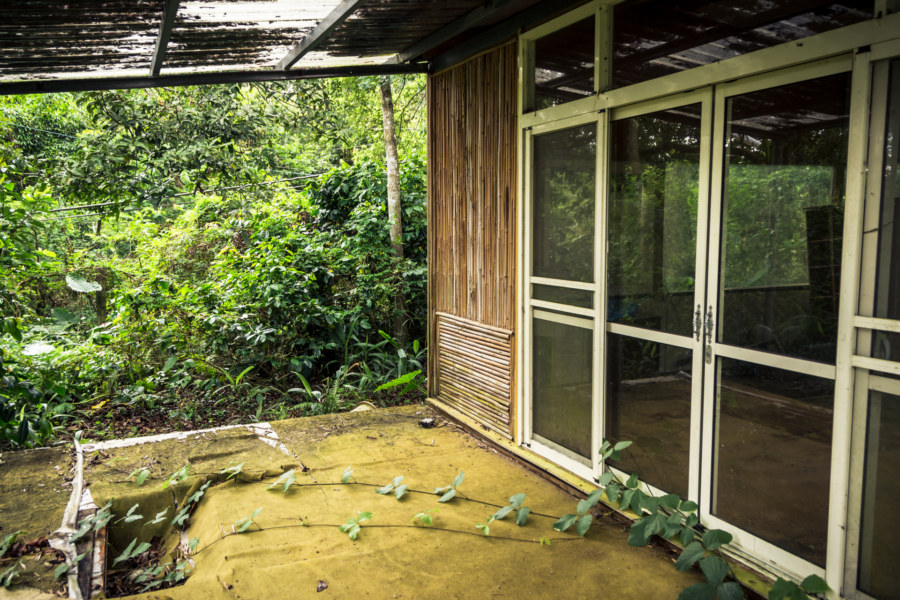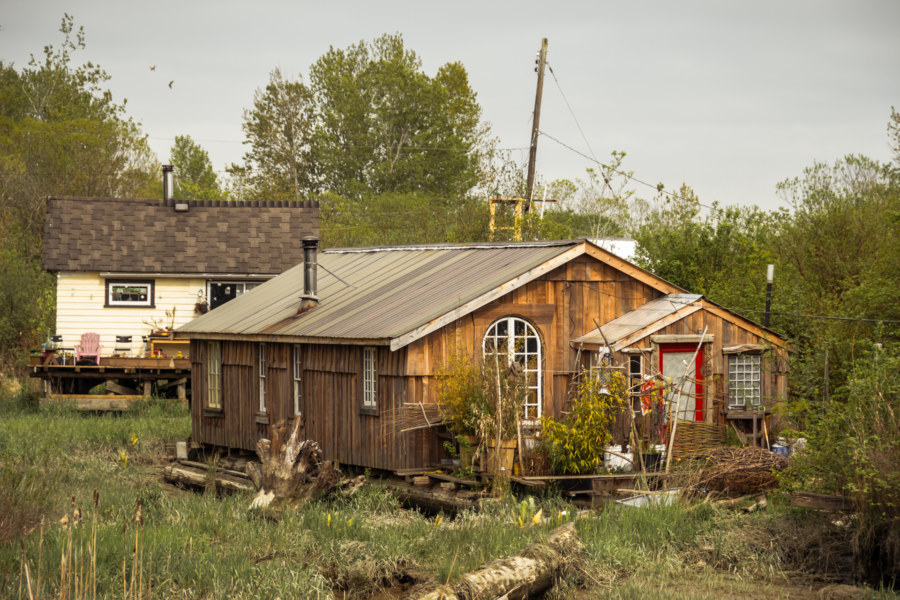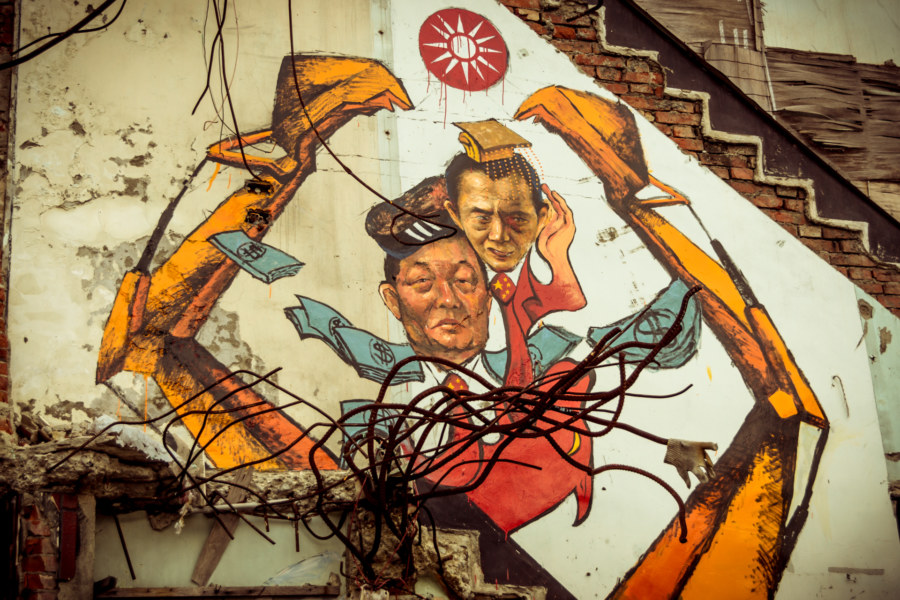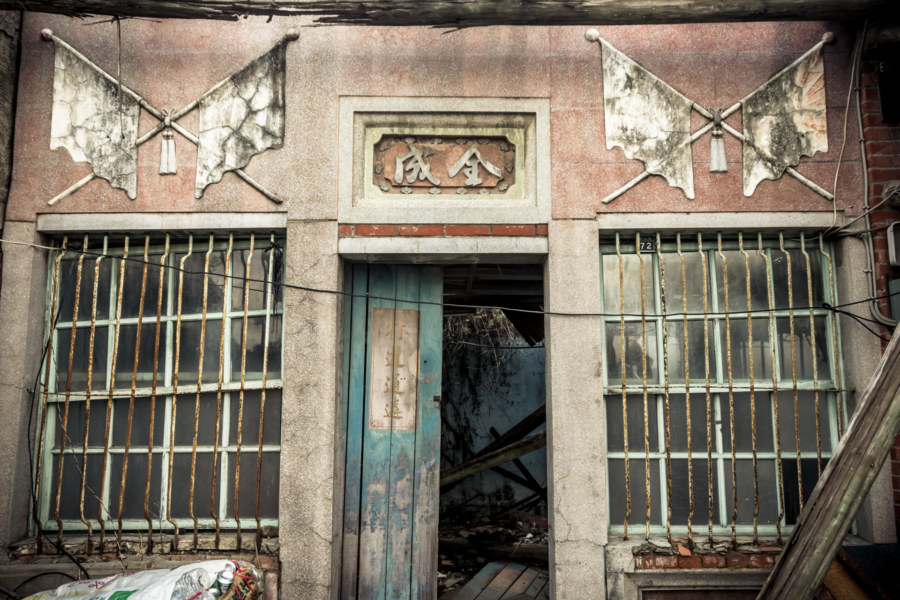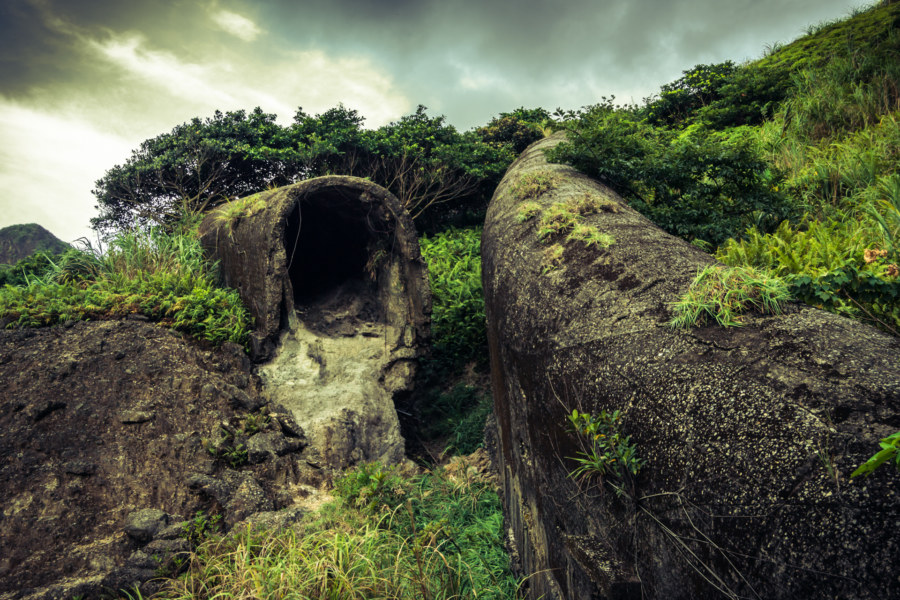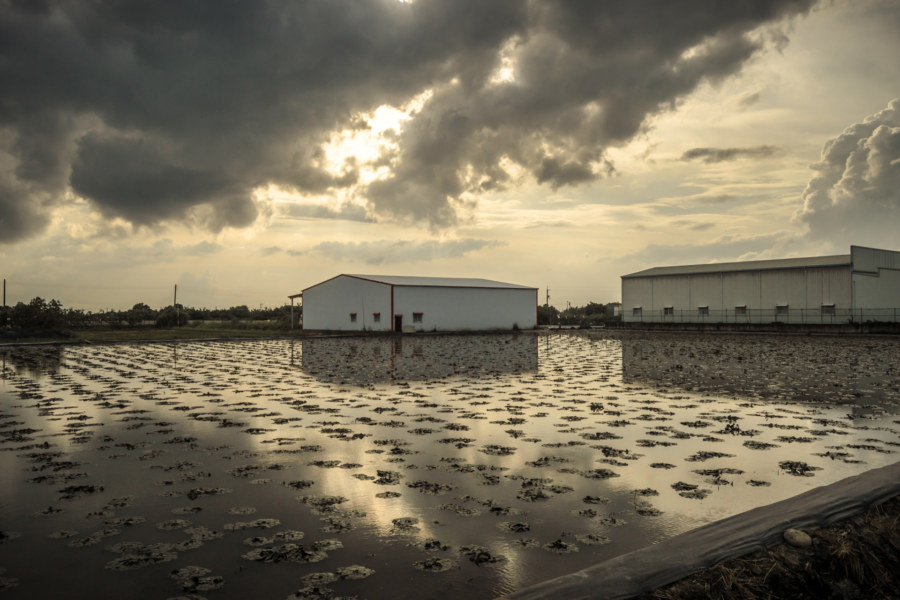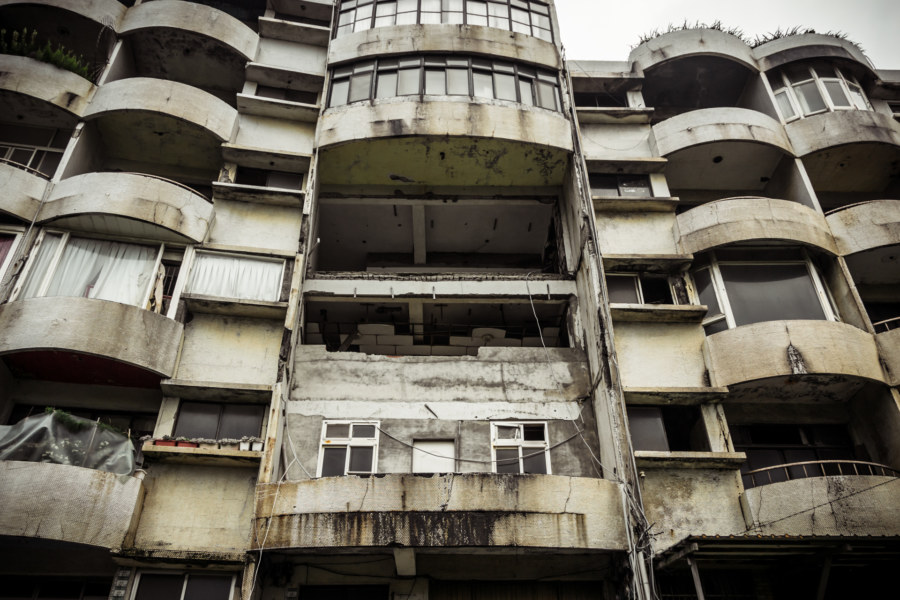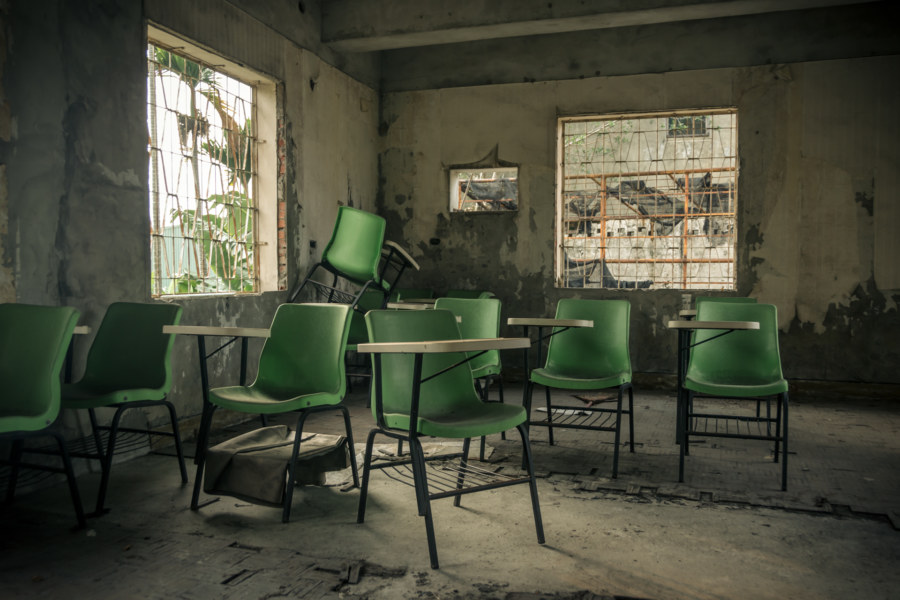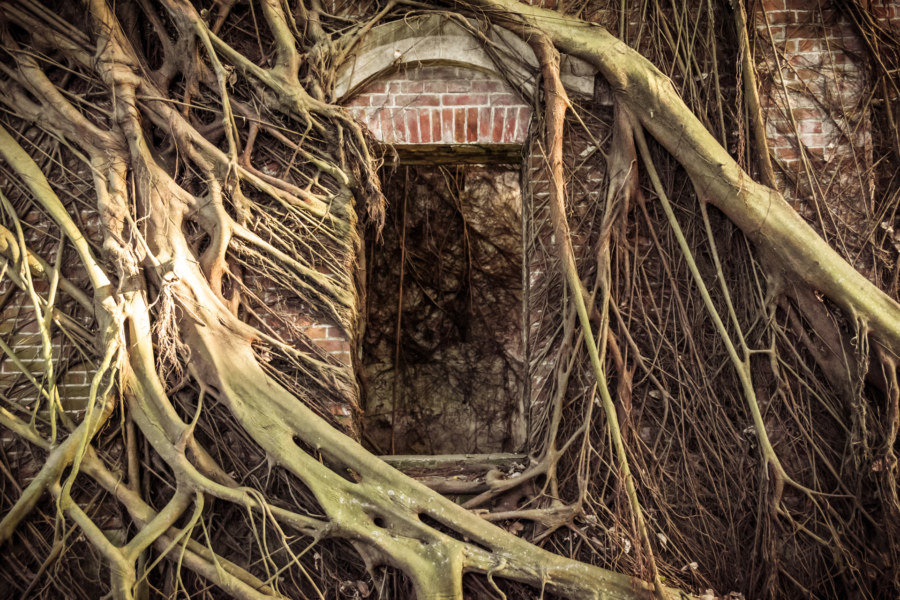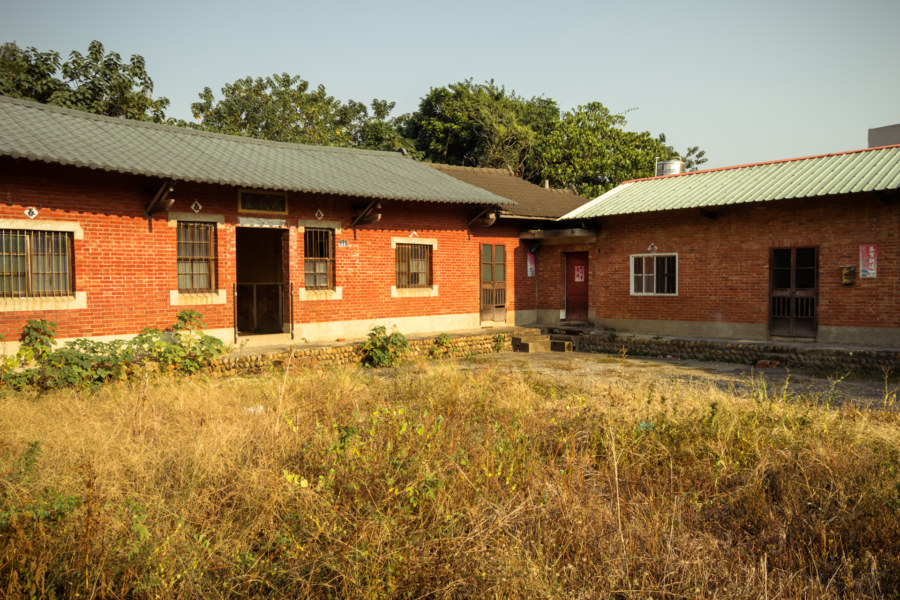I was out riding a scooter from Changhua the hot springs resort town of Guanziling in rural Tainan when I noticed a rundown, seemingly abandoned building by the roadside in the mountains of Zhongpu, Chiayi. Stopping to investigate, I discovered a mínsù 民宿 (essentially a bed and breakfast) in the early stages of decay. Initially I had no luck finding out any information about this place but more recently I uncovered its formal name: Dòngzǐjiǎo Vanilla Garden Minsu 凍仔腳香草園民宿. Dongzijiao, apparently famous for its betel nut crop, is the name of the nearest village.
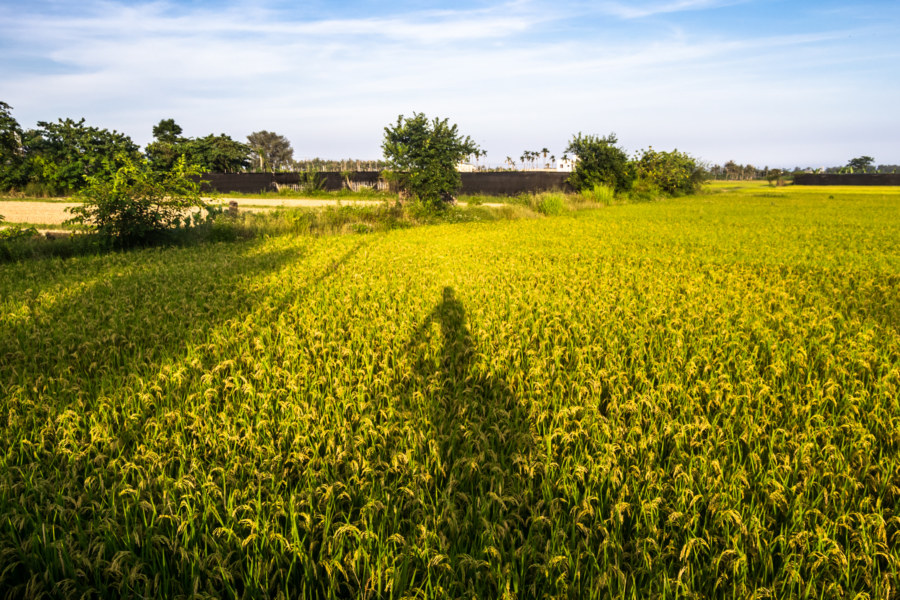
Dispatches from the countryside, beyond the dense urban cores, amidst the long fields and low buildings. See also: agricultural, landscapes, and mountains.
Adjacent Terms
Finn Slough
Founded by Finnish settlers in the late 19th century, Finn Slough is a tiny fishing community located along the marshy banks of the mighty Fraser River in southern Richmond, British Columbia. In the early 20th century the settlers moved the village to its current location, a slough (swamp, pronounced “slew”) at the base of the No. 4 Road on Lulu Island east of Steveston. Most—if not all—of the buildings in Finn Slough were constructed prior to 1950, lack modern plumbing, and rely on wood-burning stoves for heating.
The Seeds of Unrest
Part of a mural by Taiwanese artist Liu Tsungjung 劉宗榮 in Dapu village.
Last night I went to Dapu Village in Zhunan, the northernmost township in Miaoli, for a concert and movie screening commemorating the treacherous demolition of four homes last year. The event took place on the former site of Chang Pharmacy, whose owner, Chang Sen-wen (張森文), was later found dead in a drainage ditch in an apparent suicide. This occurred not long after the government razed his home and business to the ground with all his possessions still inside. In a cruel twist of fate the Chang family was served a bill for demolition equalling the financial compensation offered by the government—leaving them with absolutely nothing. Eminent domain may serve the public interest in special circumstances—but this was outright robbery by the state.
The Dapu incident1, in brief: Miaoli magistrate Liú Zhènghóng (劉政鴻, pictured above, at left) ordered the expropriation of 156 hectares of land in Dapu Village in 2009, ostensibly to build a new…
Gushan Village Old Homes 姑山里老屋
I was off the main road in Gūshān Village 姑山里 in Dashu, a hilly rural district in Kaohsiung, when I noticed a row of old buildings next to a small temple. Stopping to investigate, I unslung my camera and snapped a few shots, not quite realizing what I was looking at. My mind was elsewhere—a consequence of two hard days of riding in the tropical summer sun. I was, at the time, heading south to the railway line after making it to Qishan the night before and touring through Meinong earlier in the day. Only later, when I went to develop the photos, did I notice the faint traces of the Japanese rising sun flag in the top right corner of the building pictured above. At one point these stone flags must have been painted bright red, a reflection of Japanese imperial interests in Taiwan.
Changren Waste Flues 長仁廢煙道
The waste flues of Ruifang are an extraordinary sight. The ruins of these massive, crumbling conduits run for miles up the mountainside from the Shuinandong Smelter 水湳洞精鍊廠 and the rest of the abandoned mining complex below. Originally built during the KMT authoritarian era to transport noxious fumes and waste gases away from the refinery—and nearby settlements like Jīnguāshí 金瓜石—these flues are reputedly the longest in the world.
A Long Ride From Tainan to Changhua
I have been working very hard these last few weeks—a little too hard, at times. To break the monotony of laying code every day I elected to go for a proper ride yesterday. Since moving to Tainan I haven’t gone on any long rides whatsoever—so I geared up for a day on the road, preparing for almost any eventuality. I had several destinations in mind such as the badlands to the east of the city but struck out to the north on a whim, intending to make it to at least Chiayi City by sundown.
Harbour City 海灣新城
Harbour City 海灣新城 is an imposing ruin sprawling along the coastline not far from Cape Fugui 富貴角 at the northernmost tip of Taiwan. I first noticed it on my round-the-island bicycle tour last year but did not stop to explore, having already spent much of my daylight riding time poking around the UFO houses of Wanli.
More recently I set out on a two-day urban exploration road trip with a friend from the Netherlands. Late in the afternoon on the first day we were thrown out of an abandoned amusement park in nearby Jinshan. Not having anything better to do with the remaining hour or so of daylight, I suggested we make our way up the coast to Shimen to investigate the ruin I had seen the previous year.
Wufeng Minsheng Clinic 霧峰民生診所
On the way back from the 921 Earthquake Museum 九二一地震教育園區 in early 2014 I noticed an abandoned building at the side of the highway in rural Wufeng. Stopping to investigate, at first I assumed it must have once operated as a bǔxíbān 補習班, or cram school, a common feature of the social landscape here in Taiwan, but that initial hypothesis turned out to be completely wrong. Years later it was brought to my attention that this was originally Mínshēng Clinic 霧峰民生診所, the office of a country doctor by the name of Lín Péngfēi 林鵬飛. He passed away several years ago, leading to the abandonment of the clinic. More recently it was purchased by local farmers, completely renovated, and has reopened as a small museum and community center, the Wufeng Minsheng Story House 霧峰民生故事館.
Minxiong Liu Family Mansion 民雄劉家洋樓
The Liu Family Mansion (劉家古厝) in Minxiong, Chiayi, is one of the most famous ruins in all Taiwan. Situated in the countryside just outside of town, this old Baroque Revival-style red brick building is more informally known as the dreaded Minxiong Ghost House (民雄鬼屋). It was built in 1929 for Liú Róngyù (劉溶裕), a businessman with seven children, and appears to have been abandoned sometime in the early 1950s, not long after the end of Japanese colonial rule.
A Traditional Home in Dacun 大村三合院
Today I would like to take you inside an abandoned sānhéyuàn (三合院), a traditional Taiwanese courtyard home. This particular home is in Dacun, a rural township in Changhua, but it is not unique. The Taiwanese countryside is littered with tens of thousands of these old homes, many of which have fallen into disrepair and abandonment over the years. I have given this place a name but it is merely a description of convenience. Chances are it has no formal name.
